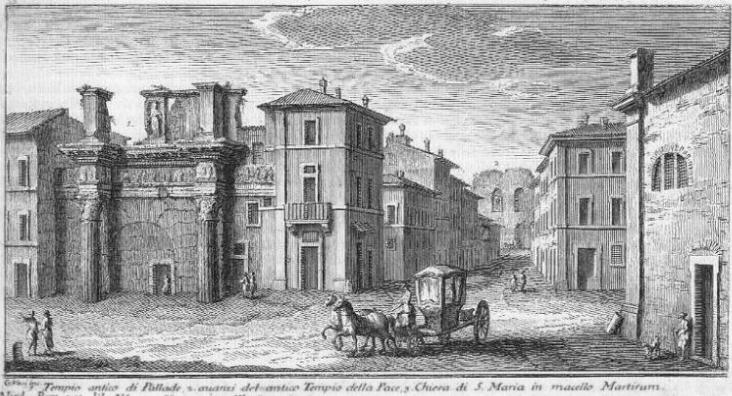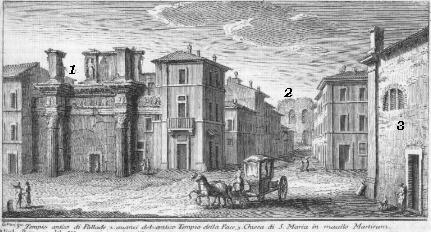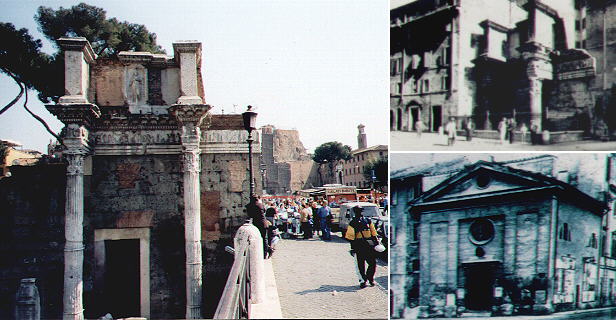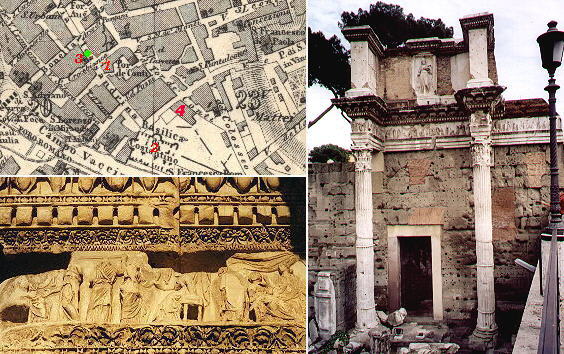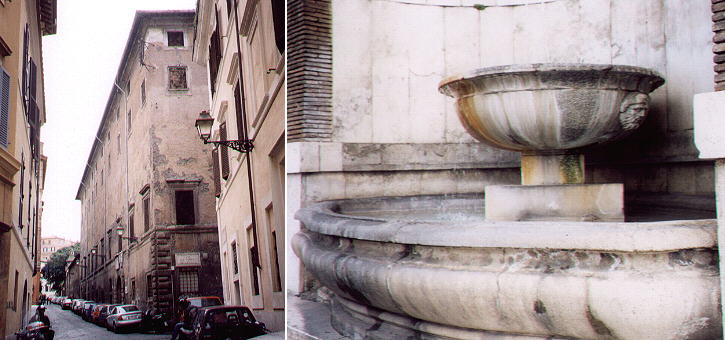  S. Maria in Macello Martyrum (Tempio di Pallade) (Book 3) (Day 3) (Rione Monti) In this page:
The church is named after the slaughter (Macello) of the martyrs
(Martyrum), which supposedly took place in the pagan temples in this area.
But the church is the pretext to show the ruins of the Temple of Pallas
and the Temple of Peace
In the description below the plate Vasi made reference to: 1) Tempio Antico di Pallade;
2) Ruins of Tempio della Pace; 3) S. Maria in Macello Martyrum. 2) is shown in another page.
In the 1930s the whole area was excavated and then partially covered to build a large "imperial" avenue between Piazza Venezia and the Coliseum and the unassuming little church was pulled down.
The Temple of Pallas was referred to as "le colonnacce" (the ruined columns). Actually the columns do not belong to the temple itself, but to the surrounding porch. You can see in an 1883 tourist map the area before the excavations (the green dot shows the point from which the view was taken). The reliefs show women involved in activities such as weaving which were protected by the goddess.
Palazzo Rivaldi (No 4 in the map) had a large garden reaching Tempio della Pace and from its high position
had a commanding view over the Colosseo and the Fora. The large building
was initially designed by Antonio da Sangallo in the first half of the XVIth century and then modified
when it was acquired in 1567 by cardinal Alessandro de' Medici (pope Leo XI). In 1662 it was bought
by a charity and turned into a hospice. In 1934 it lost most of the garden and later on it was abandoned
because of a possible collapse. In the section of Via dei Fori Imperiali which has replaced the garden of Palazzo
Rivaldi there is a modern fountain: its ancient upper basin was found in 1696 near Ostia and was used
to embellish the courtyard of Palazzo di Montecitorio.
Next plate in Book 3: Chiesa di S. Maria Liberatrice Next step in Day 3 itinerary: Ruine del Foro di Nerva Next step in your tour of Rione Monti: Ruine del Foro di Nerva
Go
to |
